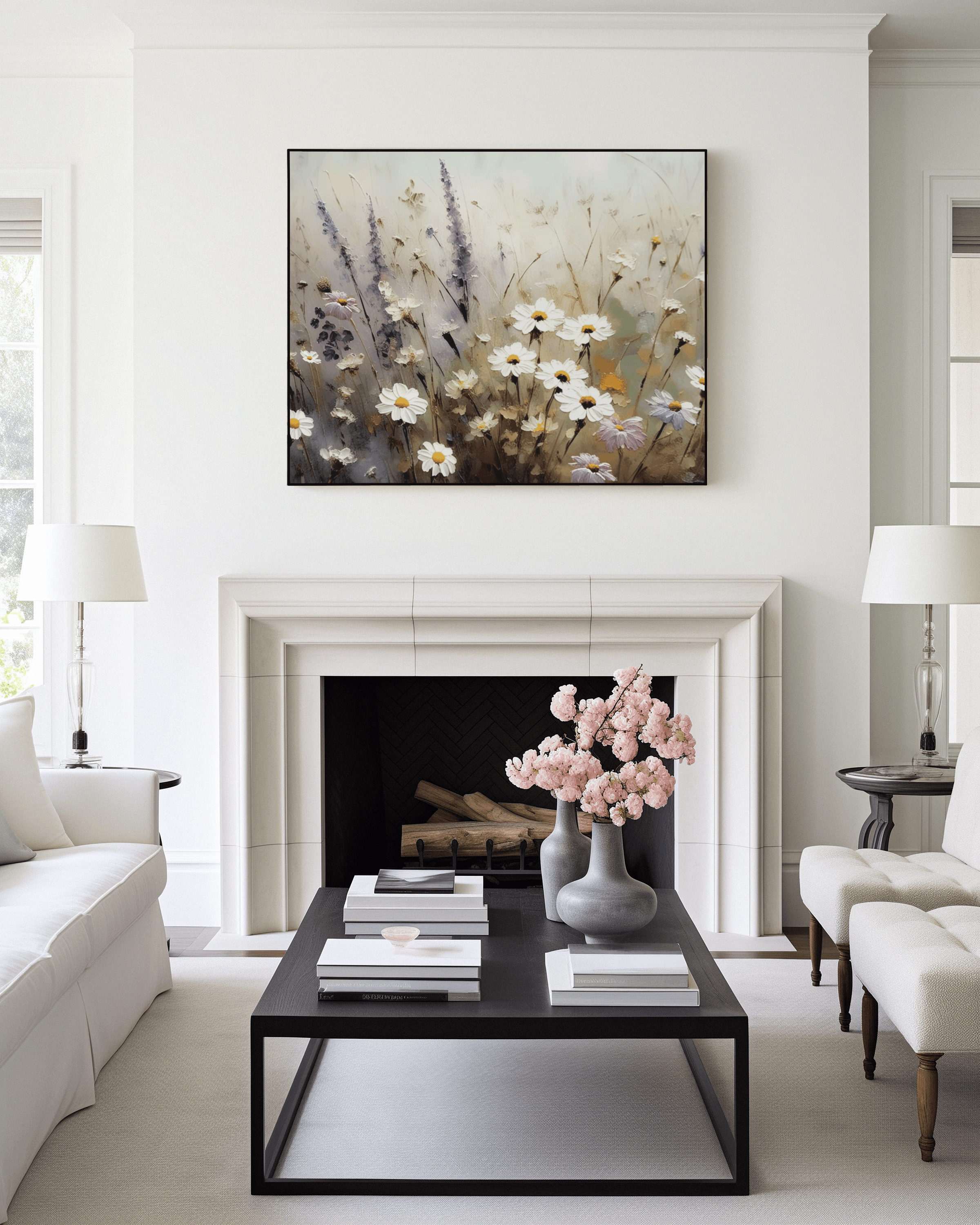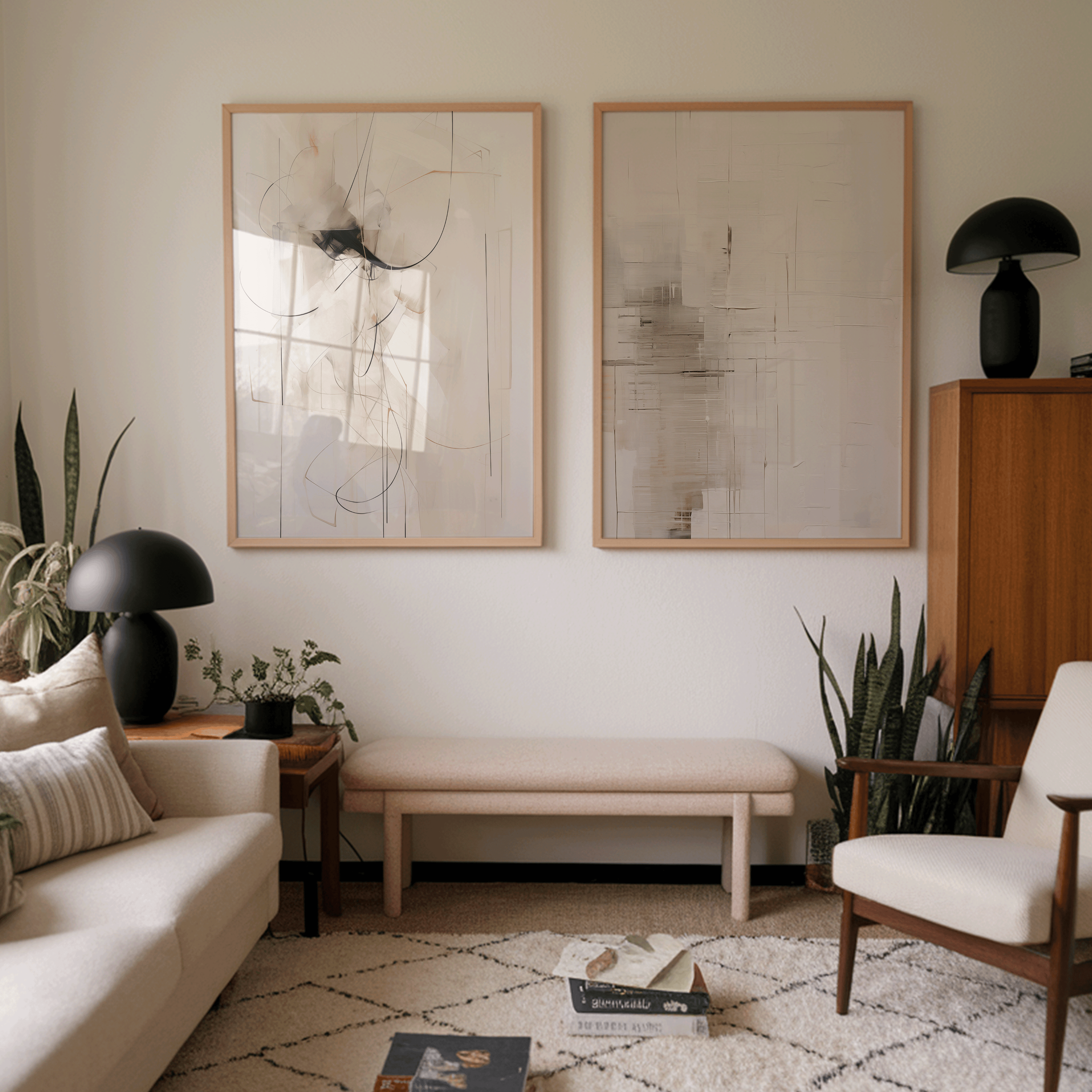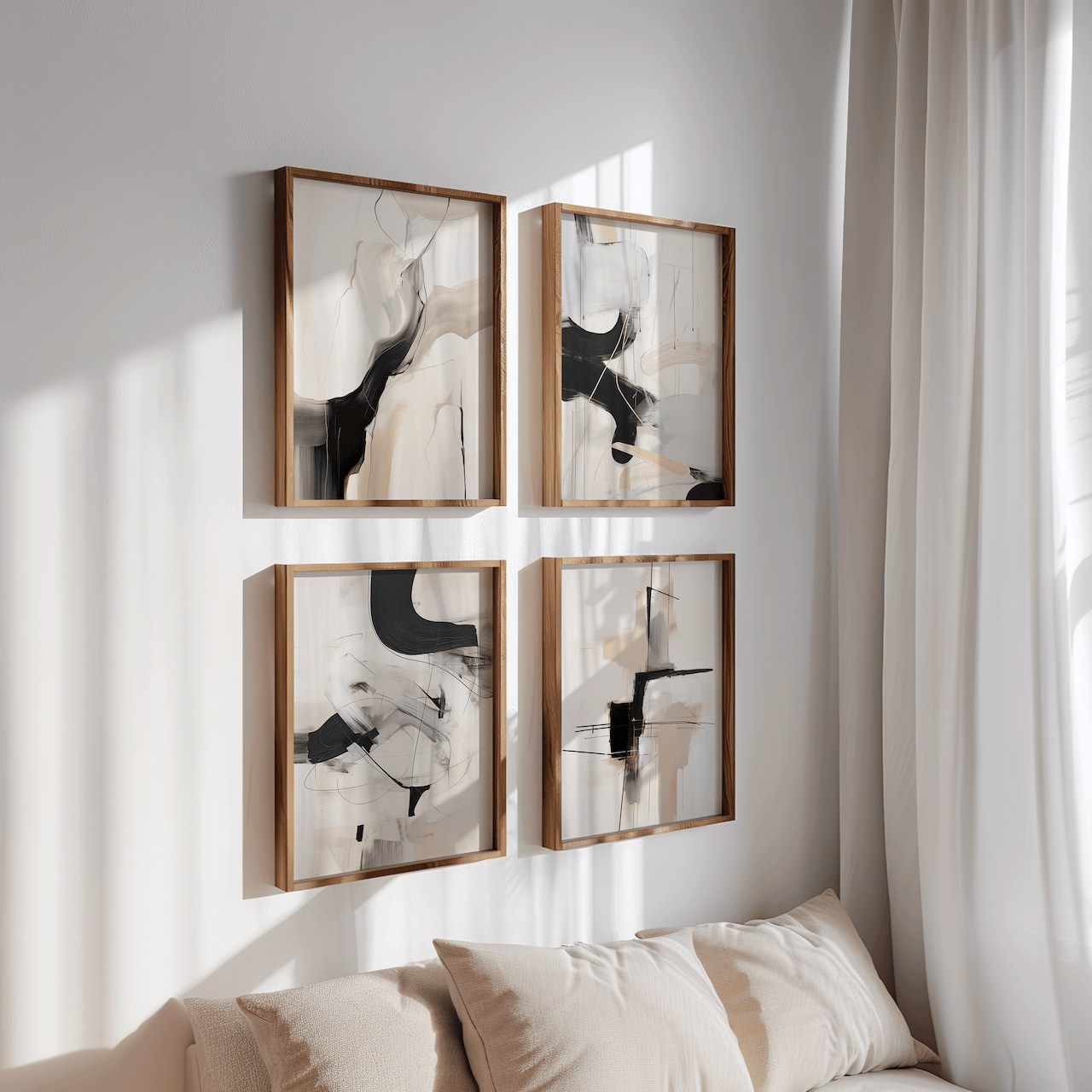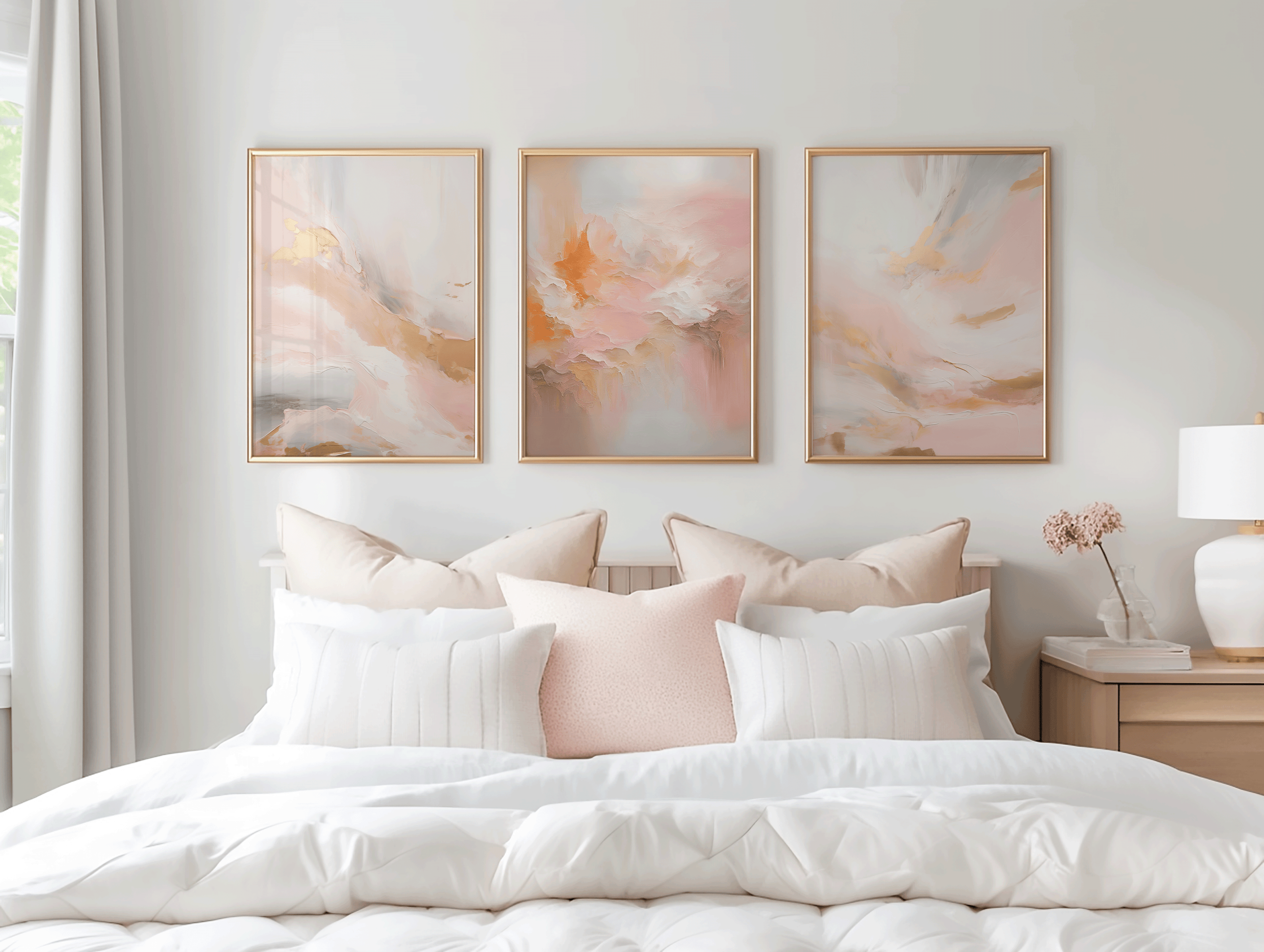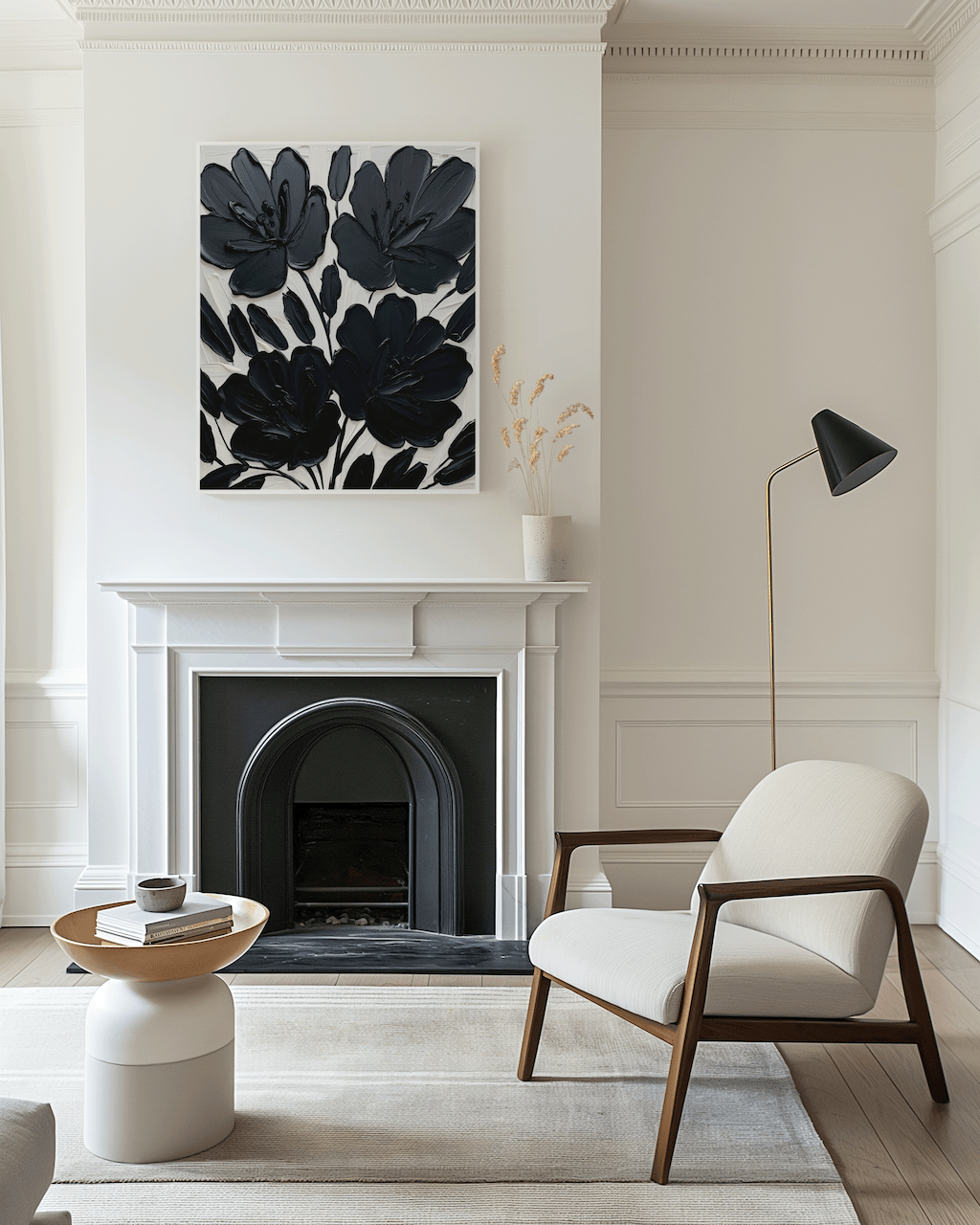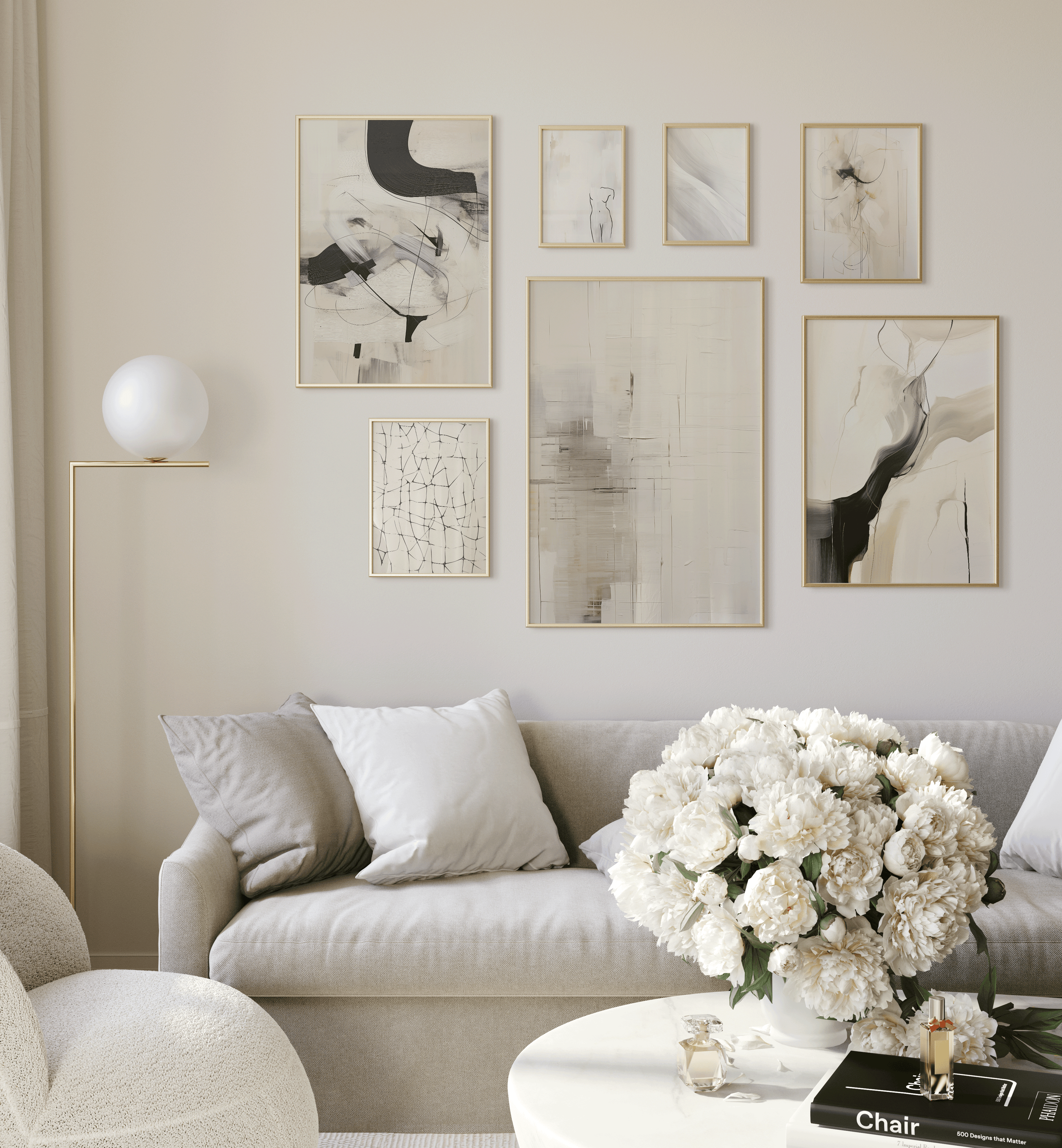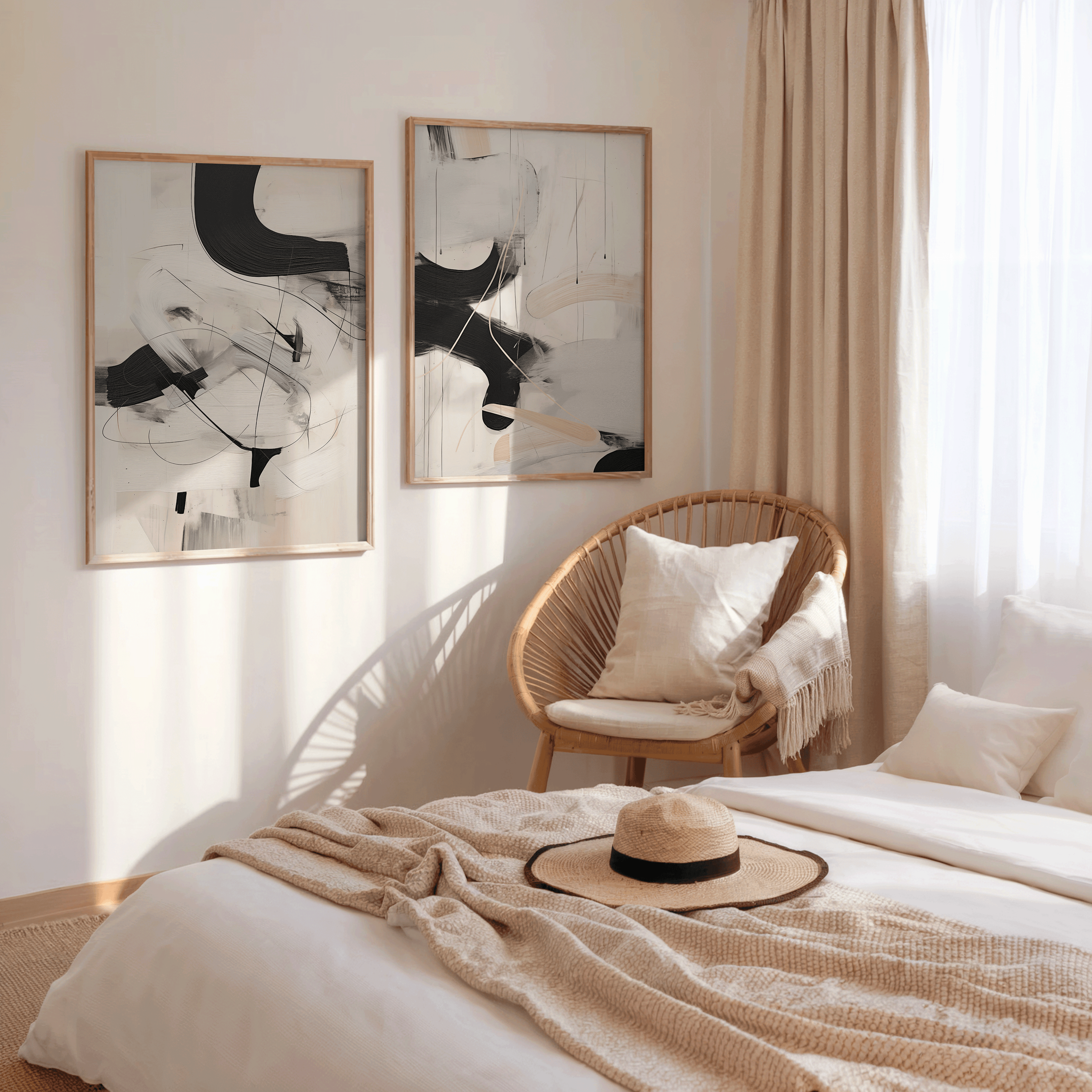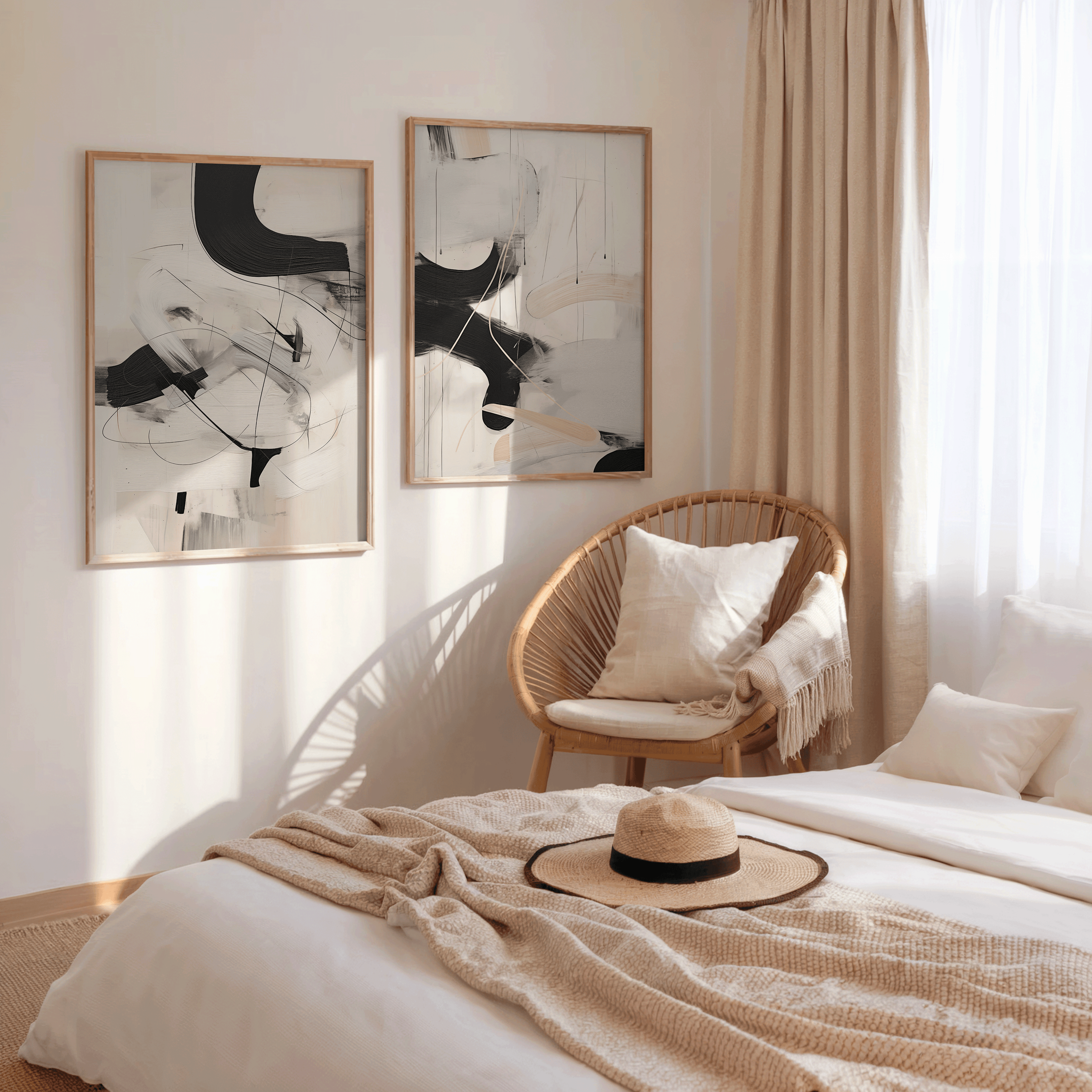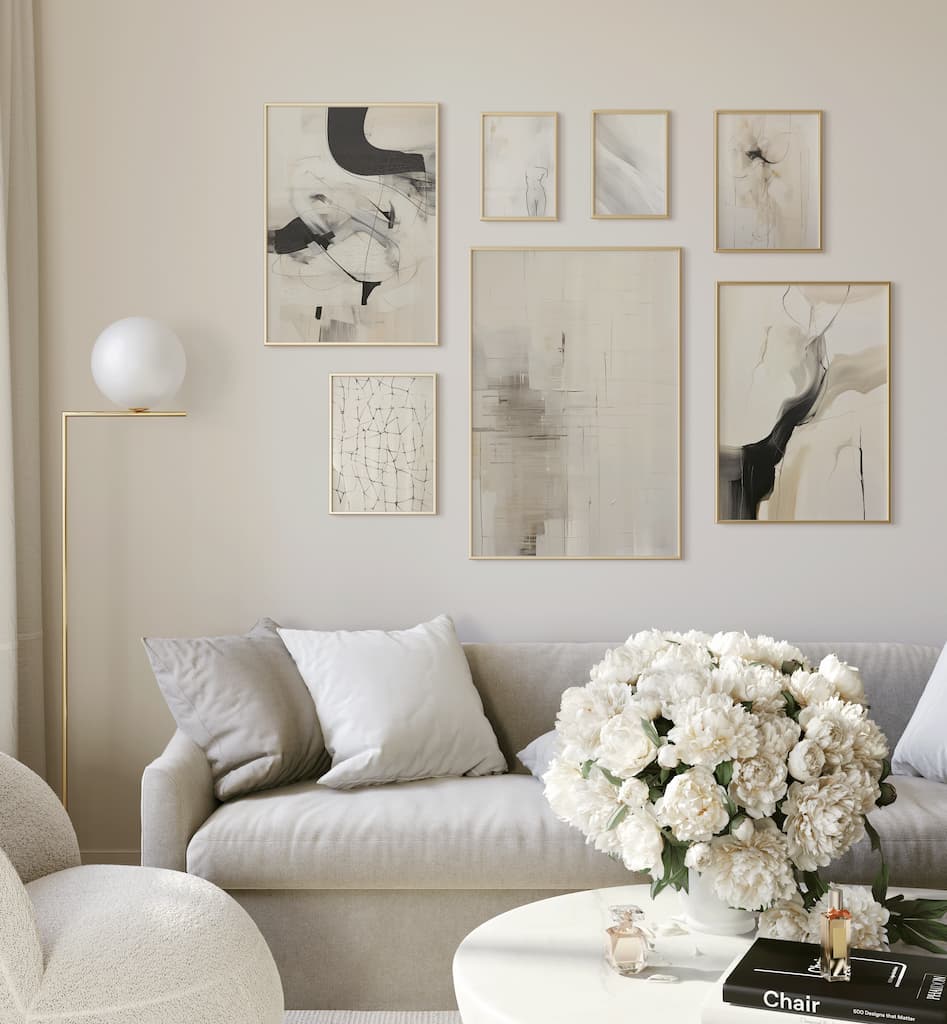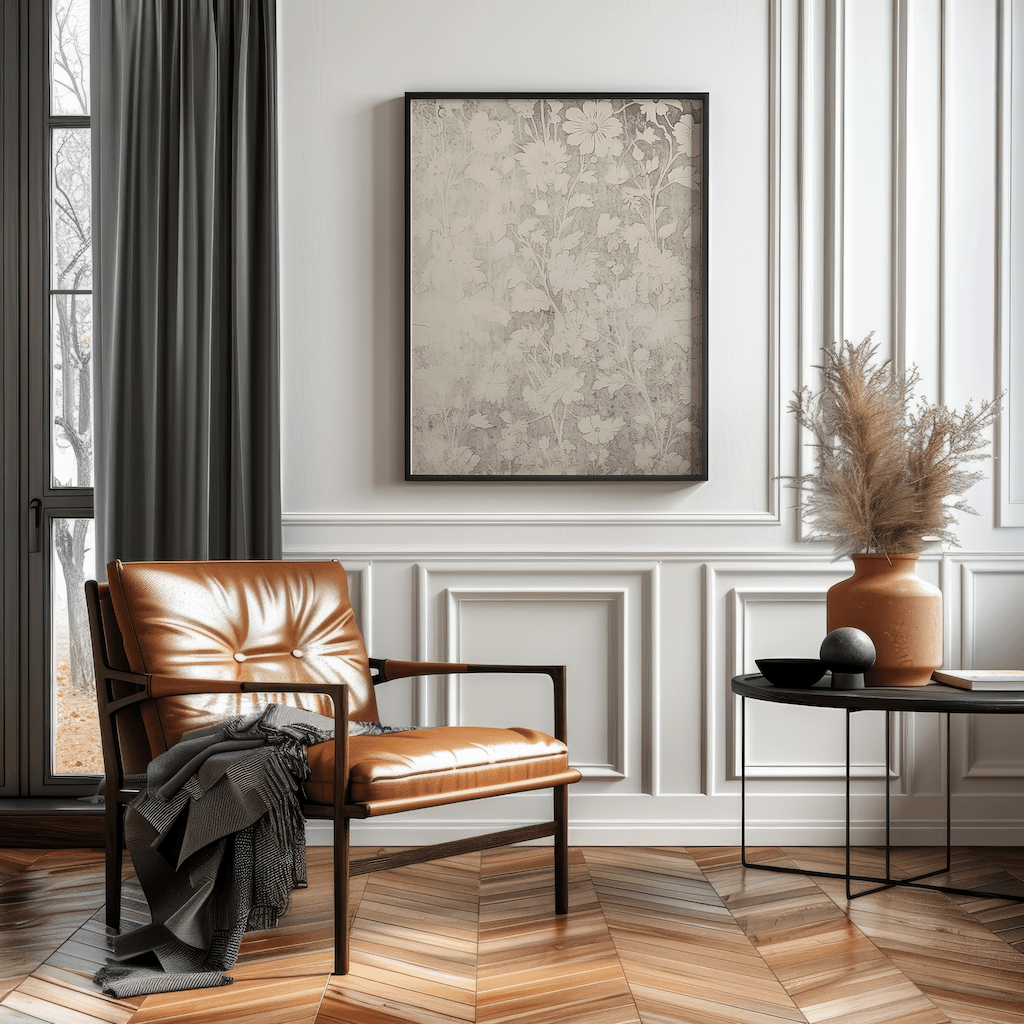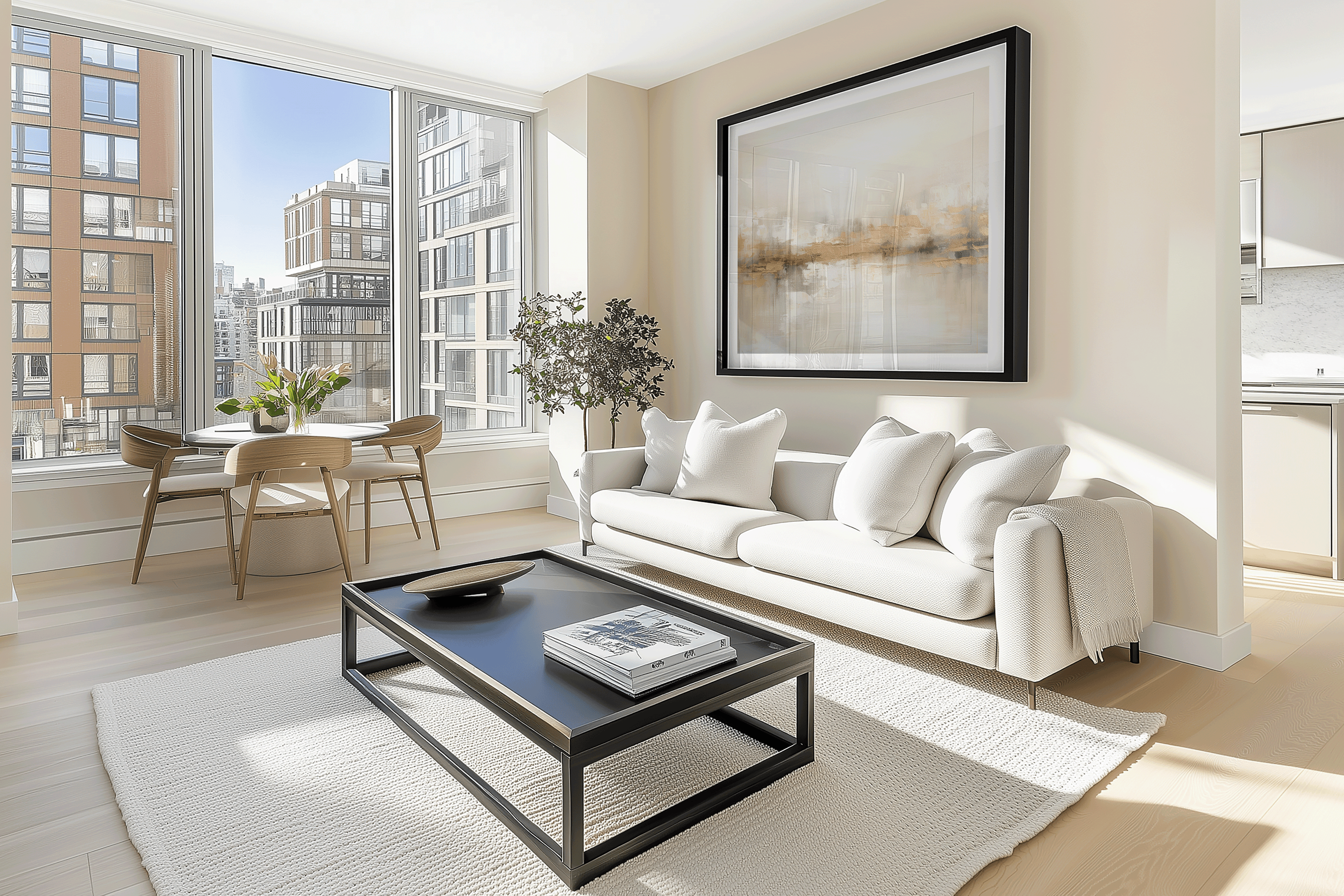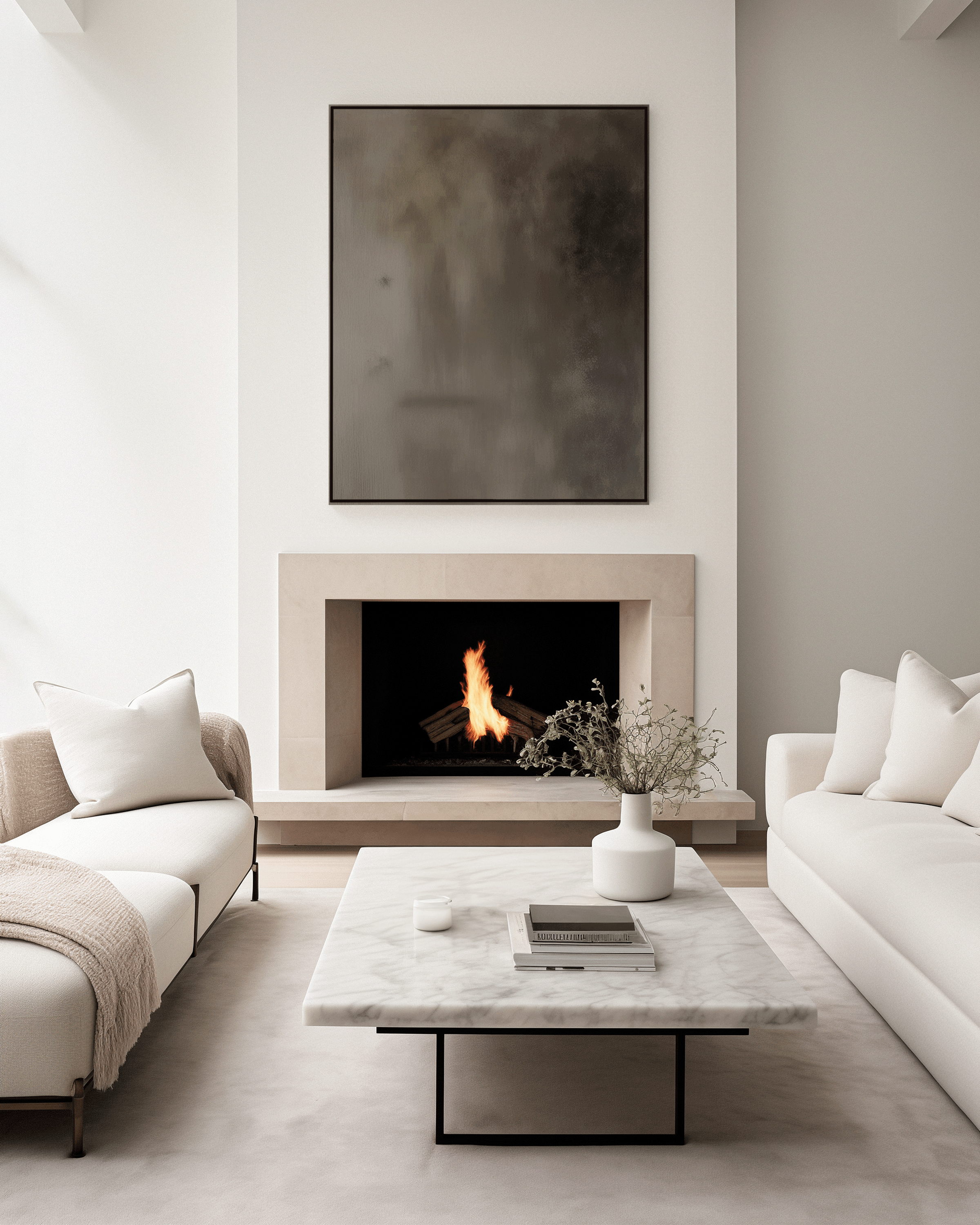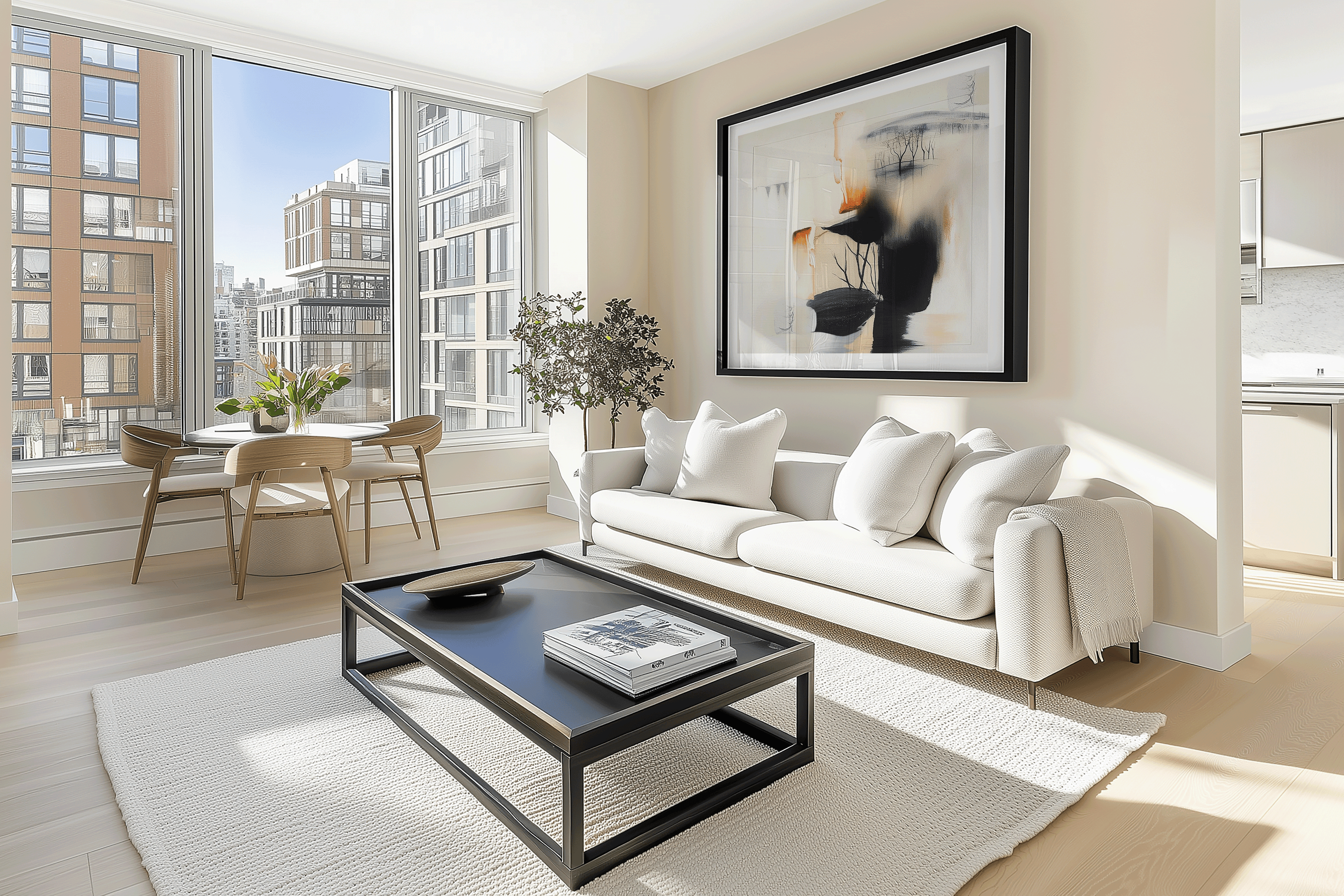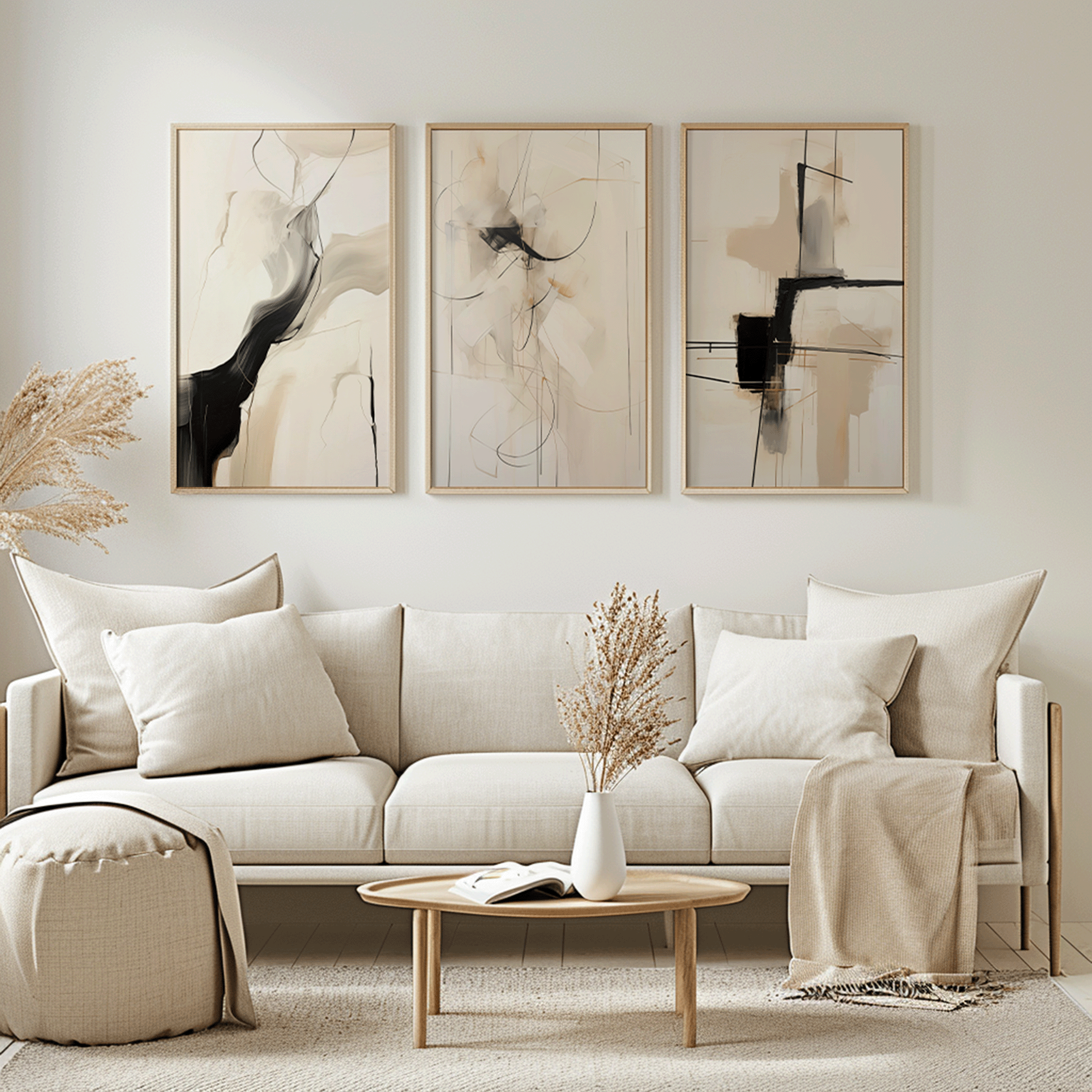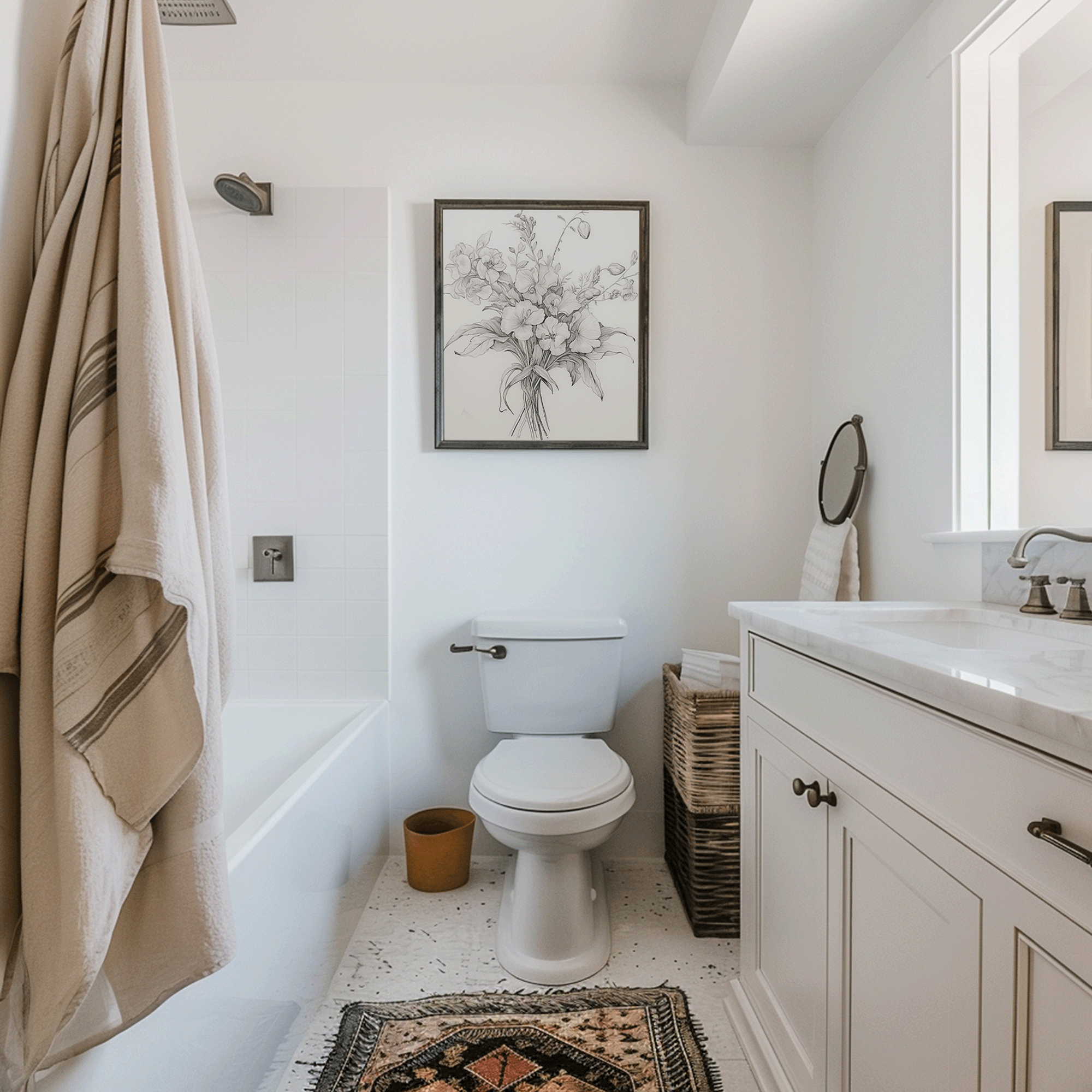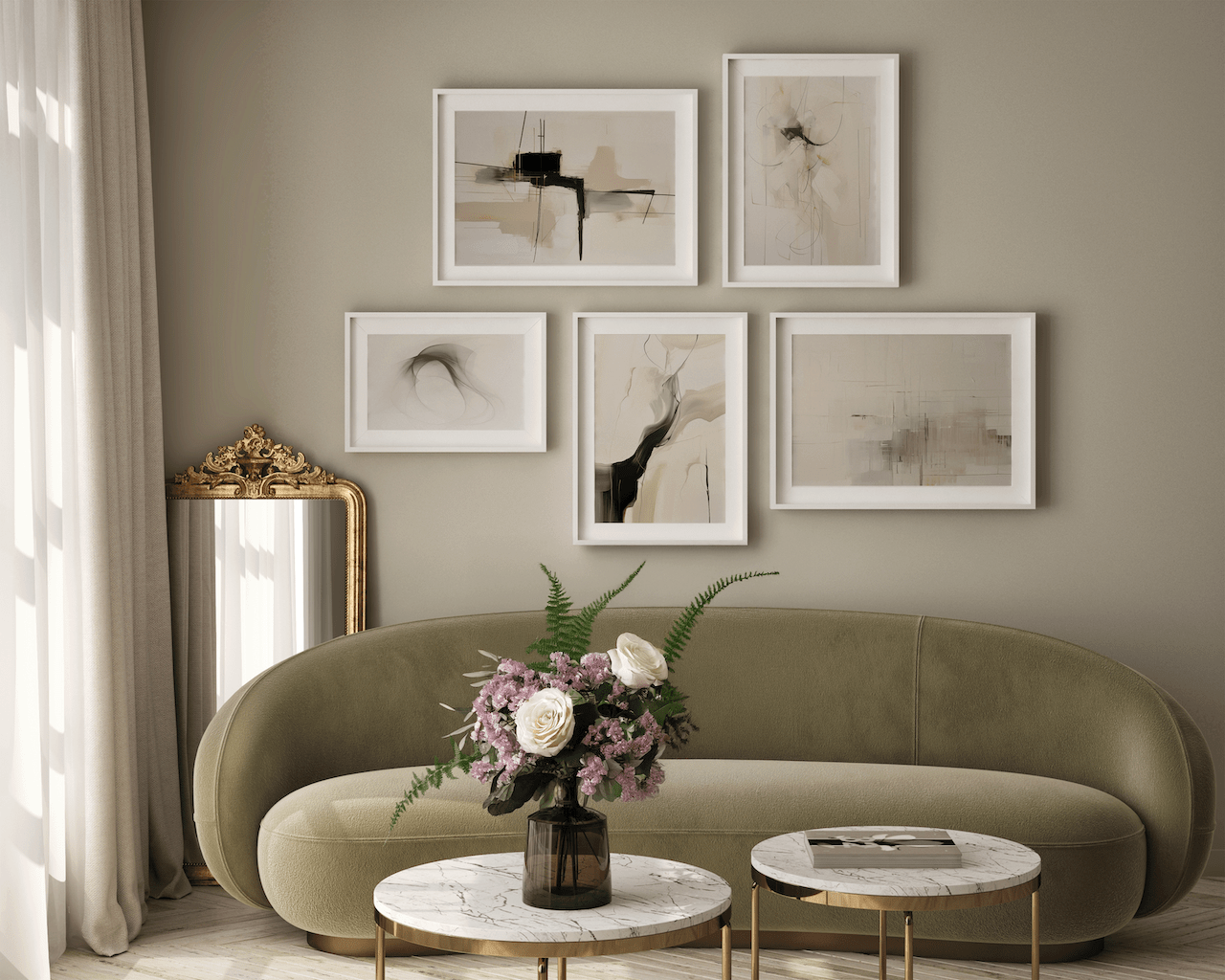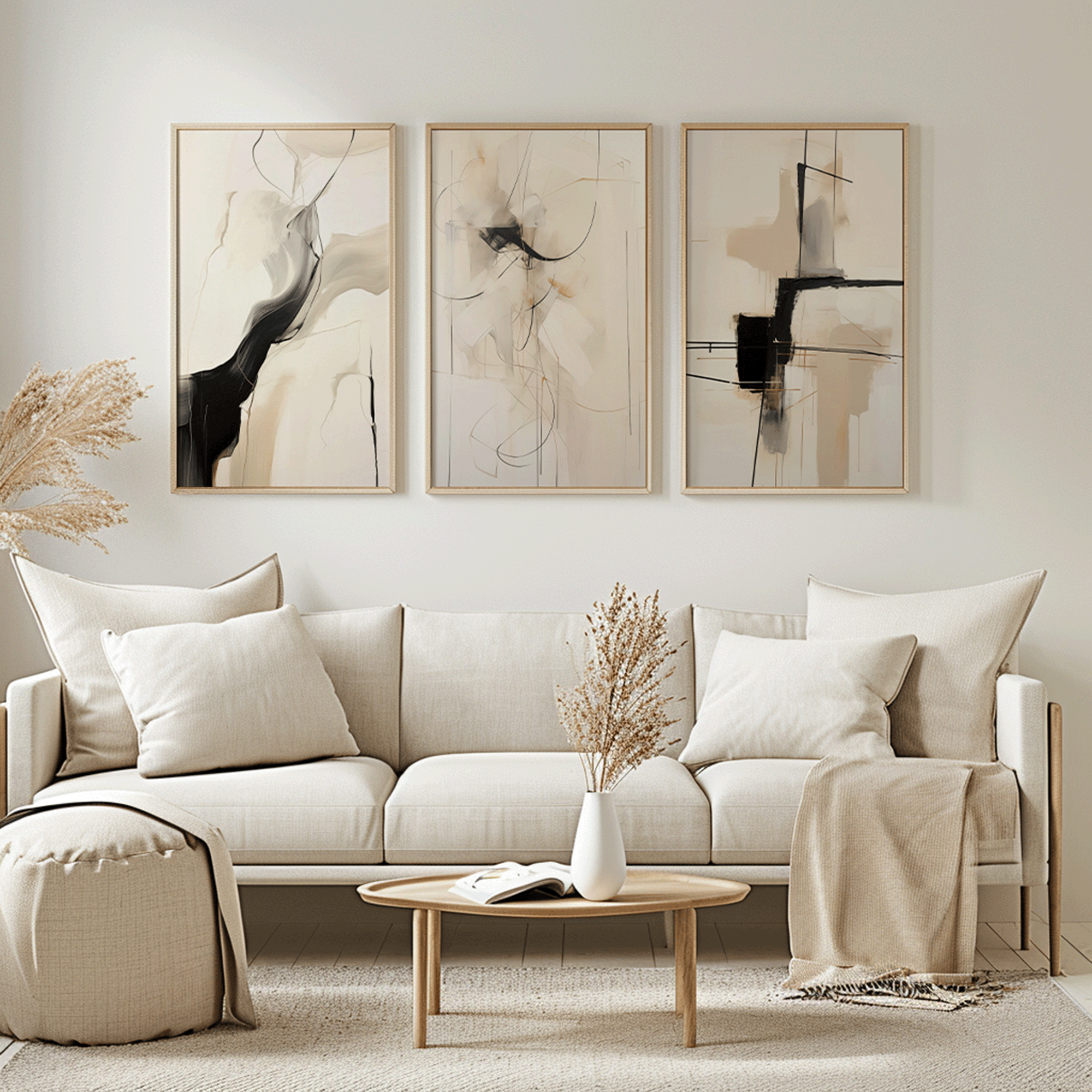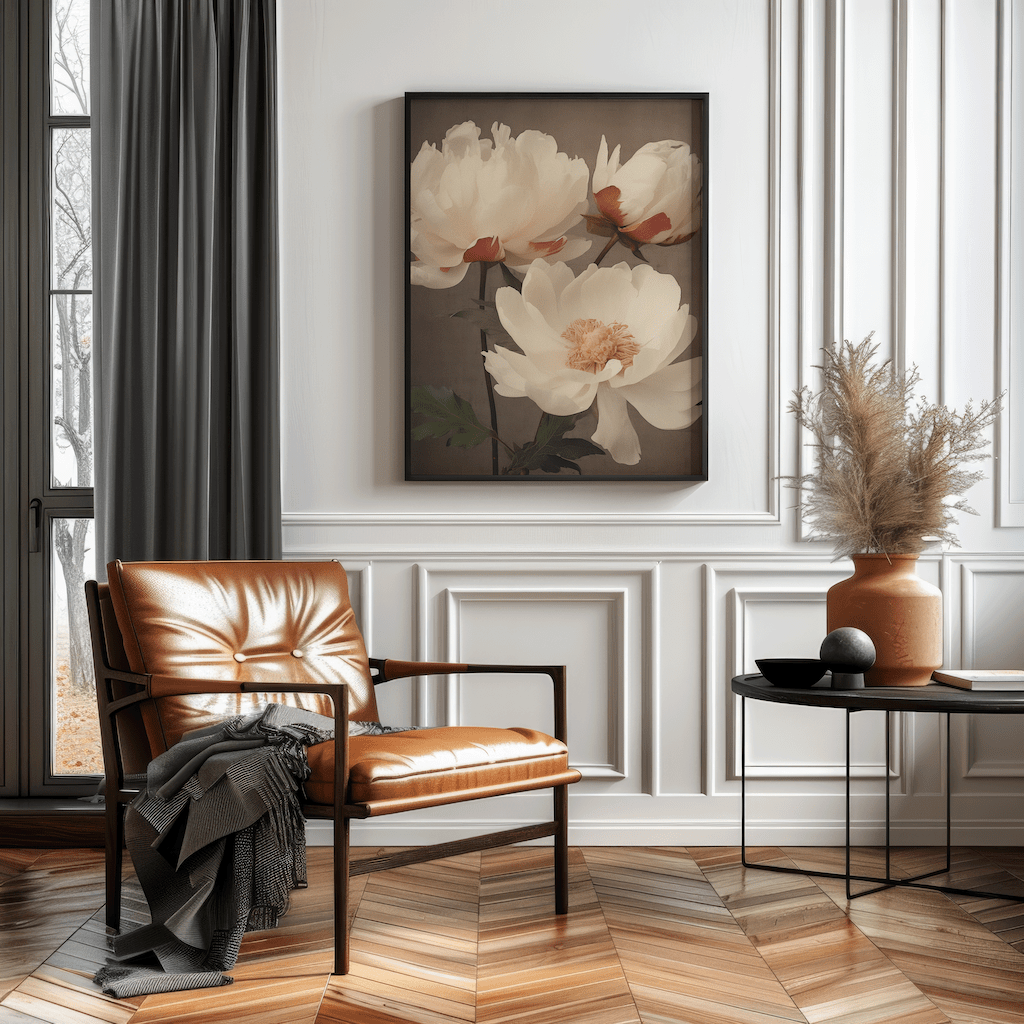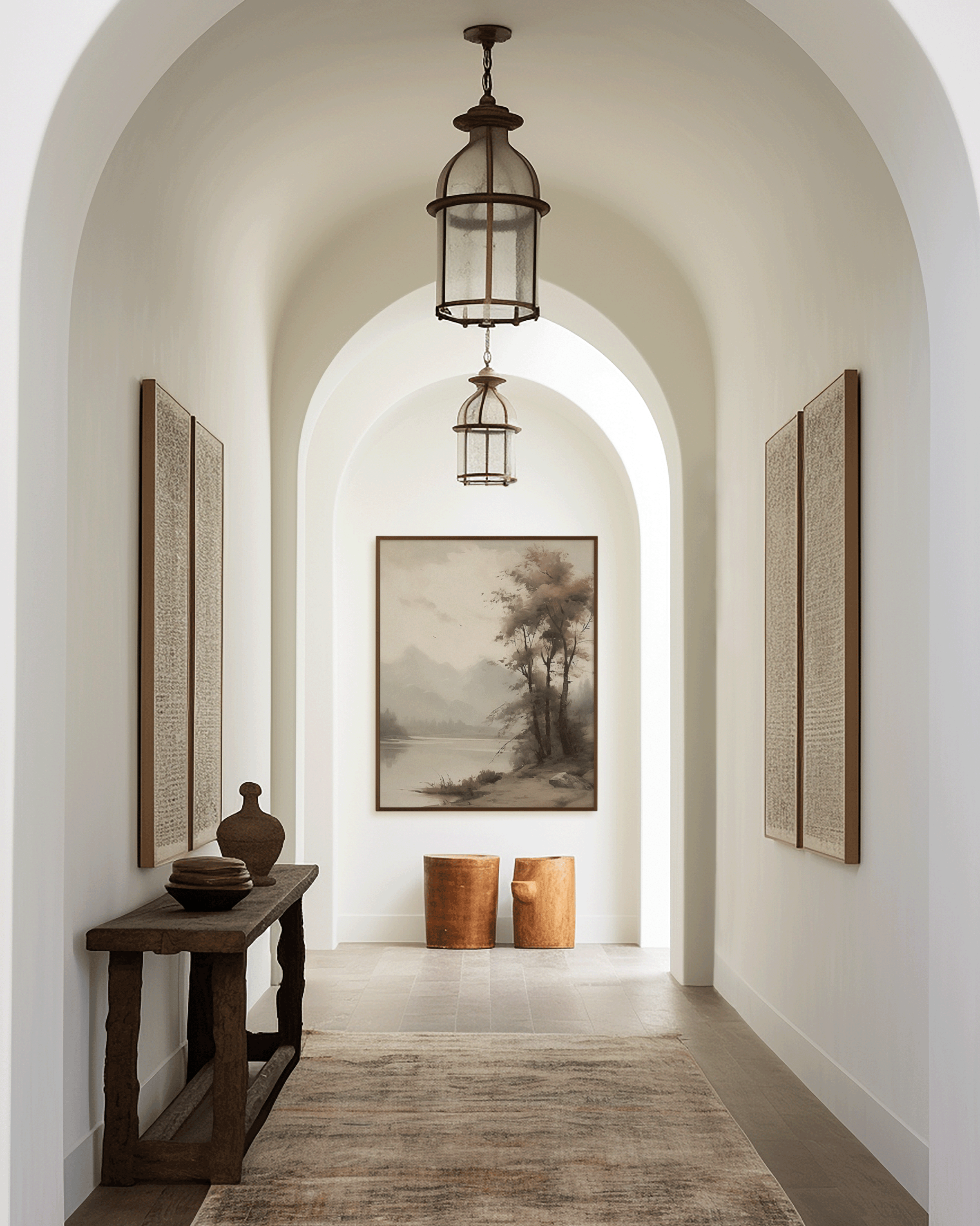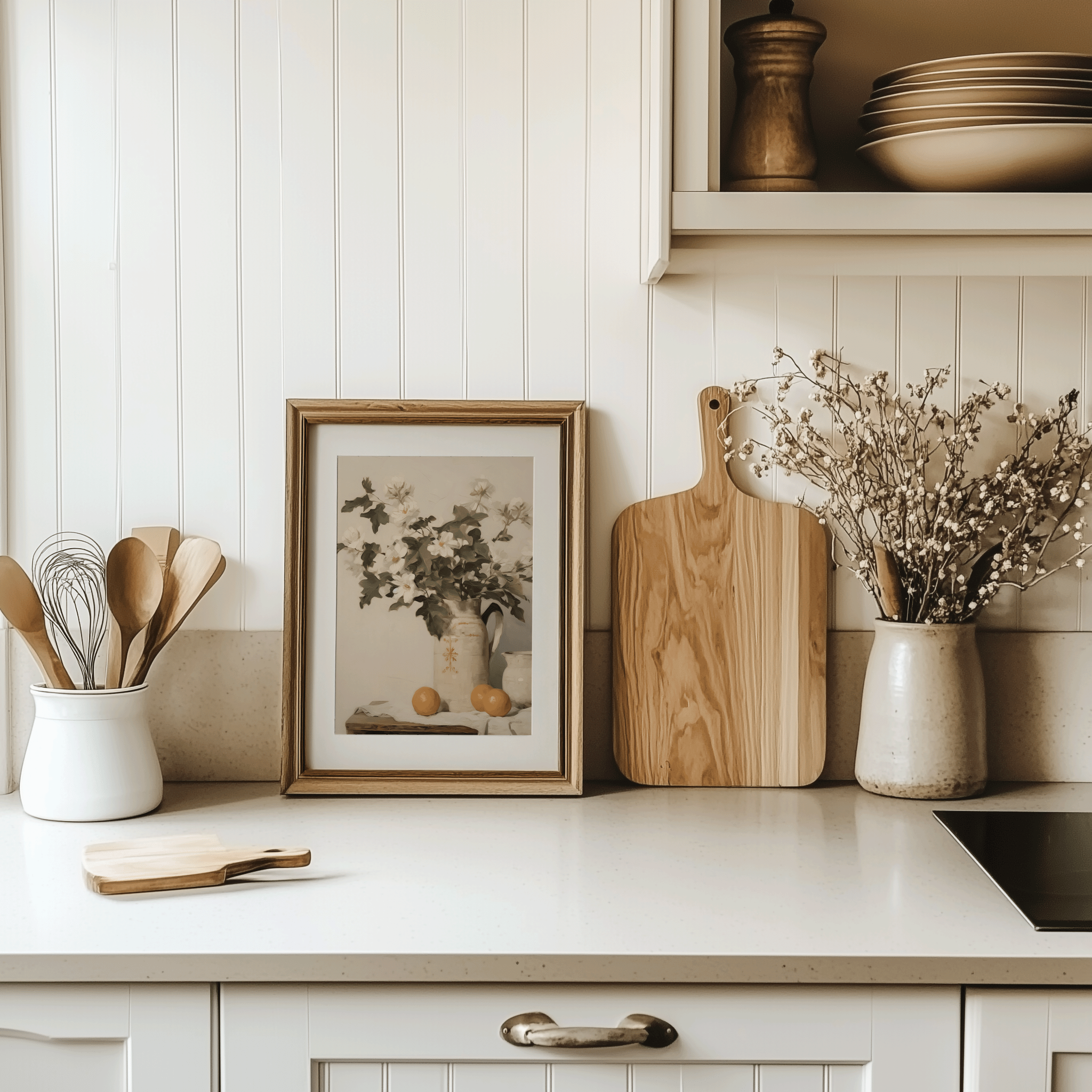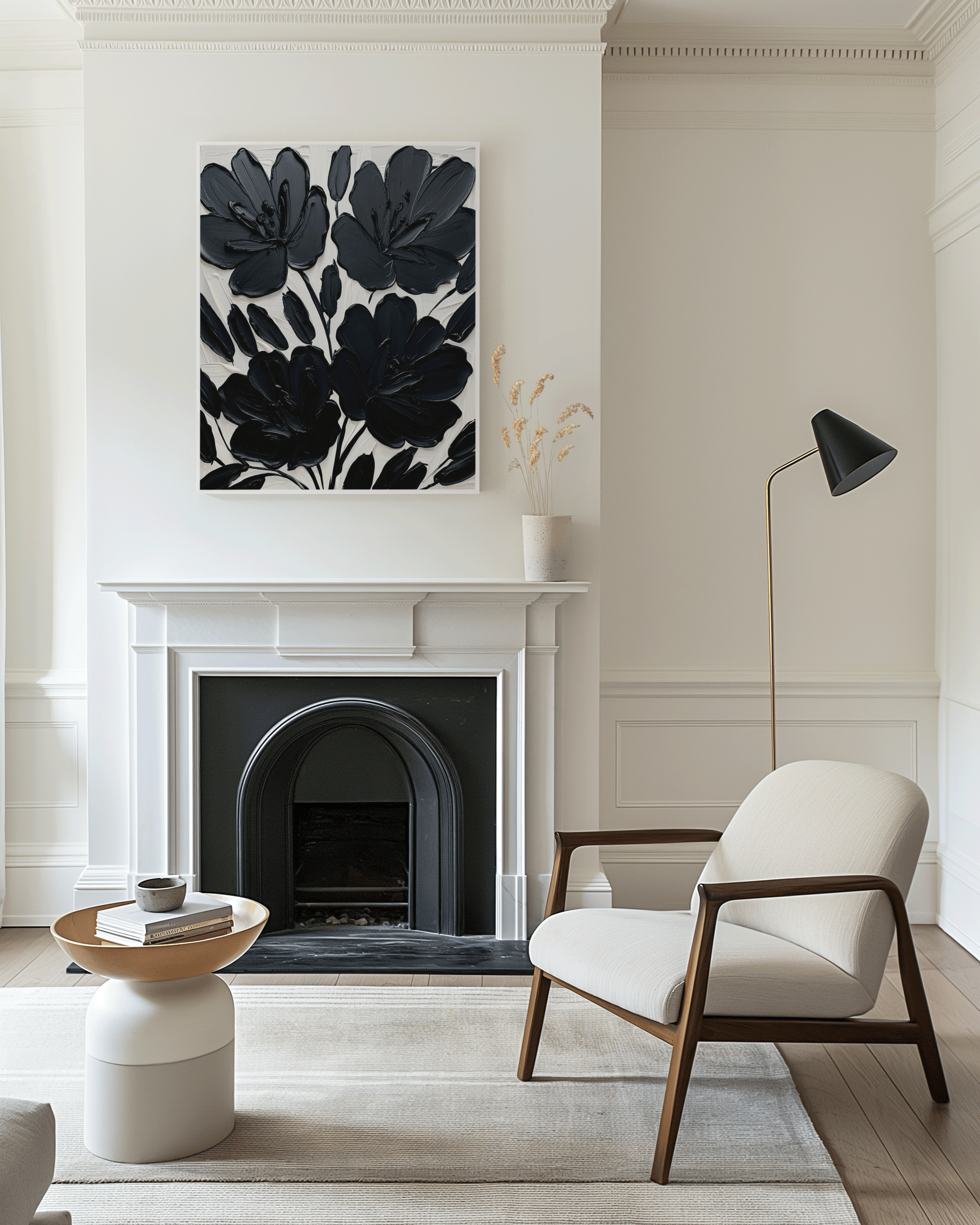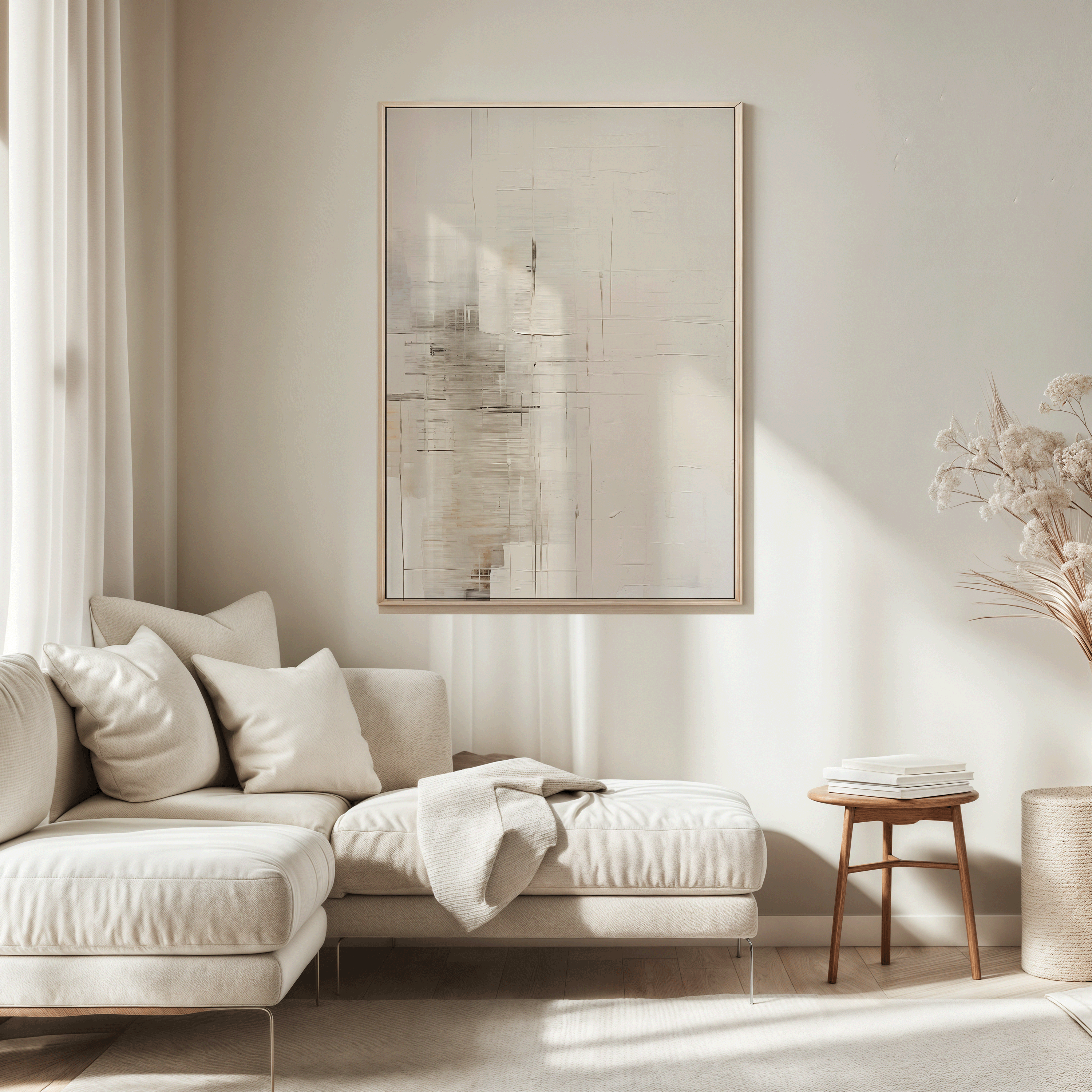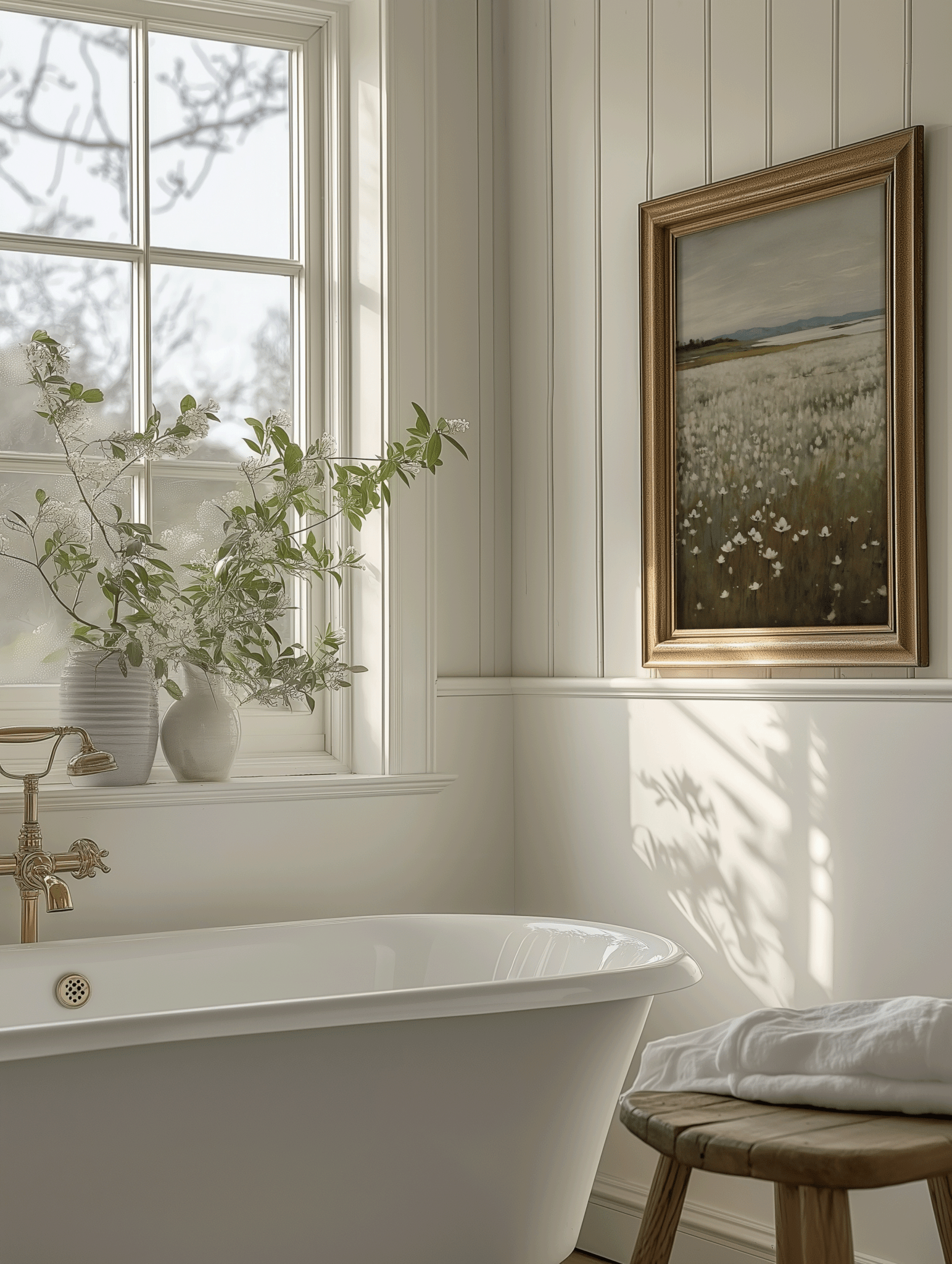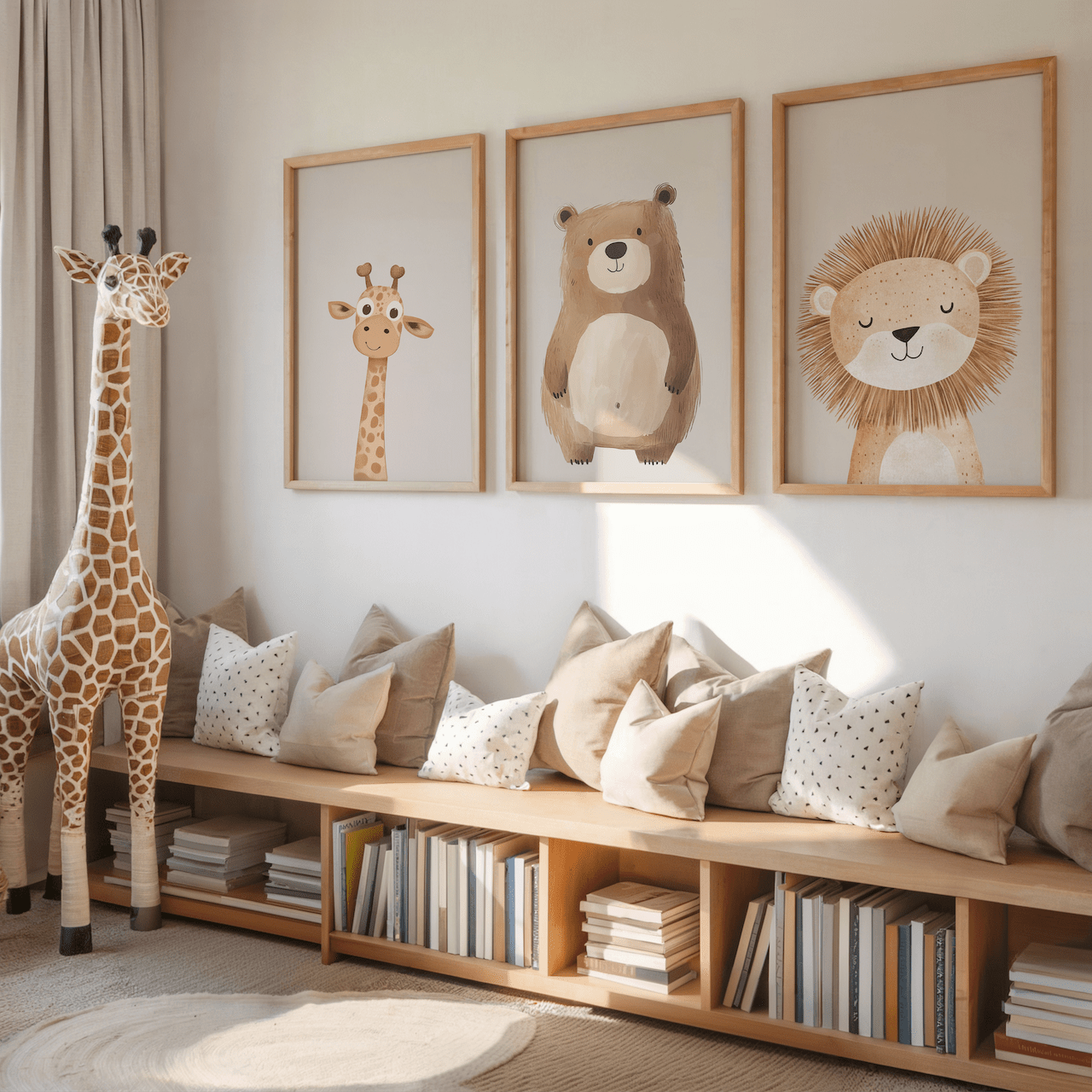Looking to upgrade your living room without redoing the entire space? You’re not alone. According to a 2023 Houzz survey, nearly 65% of homeowners said wall art was their go-to update when refreshing a room.
Why? Because the perfect wall art can completely shift the vibe, without the cost or chaos of a full makeover.
In this article, we’ll walk you through everything you need to know about living room artwork — from sizing rules and color schemes to gallery wall tips and oversized pieces. Whether you're into calming neutrals, bold statements, or something in between, this article will help you choose art that actually feels like you.

Key Takeaways
-
Choose living room wall art that fits your style and space.
Whether you love minimalist, modern, or traditional decor, the right framed or canvas wall art can completely transform your space and reflect your personal aesthetic. -
Use simple design rules to elevate your layout.
Follow the 2/3 rule for sizing and hang artwork at eye level to create balance and flow. These small choices have a big impact on how polished your living room feels. -
Go bold with large living room wall art or curated gallery walls.
Oversized canvas prints or a well-planned gallery wall help anchor big walls and make a strong style statement while adding warmth and personality.
What Type of Wall Art is Best for a Living Room?
The best kind is the one that fits your style, mood, and space. But here are some go-to formats that always work:
-
Framed Canvas Prints – Clean, classic, and gallery-ready
-
Stretched Canvas Prints – Sleek and modern with no frame needed
-
Framed Fine Art Prints – Lightweight, timeless, and perfect for layering
-
Gallery Sets – Two or more pieces that create a statement together
Choose a piece that complements your furniture and color palette, but don’t stress too hard about “matching.” Your art should feel like a highlight, not a background prop.

Not sure where to start? Take a peek at Buy Wall Art's Living Room Art Collection to see what styles are trending right now.
What is the 2/3 Rule for Wall Art?
This simple design trick makes your space look instantly more put together:
Your art (or group of prints) should span about two-thirds the width of the furniture it hangs above.
So if your sofa is 90 inches wide, aim for around 60 inches of total artwork. That could be one big print or a few smaller pieces arranged together. It creates balance and makes a blank wall feel styled, not like you just threw something up there.

What are the Rules for Wall Decor in a Living Room?
No strict rules when it comes to decorating your walls, but here are a few tips that make everything feel more intentional:
-
Eye level is your friend – Hang art so the center is about 57–60 inches from the floor
-
Use your furniture as an anchor – Don’t float artwork too high above your sofa or console
-
Stick to a palette – Choose art that pulls colors from your room (like your rug or throw pillows)
-
Don’t be afraid to go big – Large walls need large art
-
Let your art breathe – Negative space helps each piece stand out
A single oversized canvas or a matching pair of framed prints is usually a foolproof setup.

Where to Hang Living Room Wall Art
Not all walls are created equal; some make a bigger impact than others. If you want your art to stand out, start by choosing the right location.
-
The focal wall: This is usually the first wall you see when walking into the room. A bold piece here sets the tone immediately.
-
Above the sofa: A tried-and-true spot that works in almost every space. Just make sure the art spans about two-thirds the width of your couch.

-
Over the fireplace: This area naturally draws the eye. One large framed or canvas piece creates a strong centerpiece.

-
Between windows or in corners: These smaller wall spaces are perfect for vertical prints or a set of two stacked pieces.
-
On shelving or consoles: Don’t forget you can lean art on a shelf or console table for a more casual, layered look.
Tip: Try testing your artwork layout by cutting paper templates to size and taping them to the wall before hanging the real thing.
Why Framed Canvas Prints Elevate Living Rooms
Framed canvas prints instantly add a polished, designer feel to a space. The structured frame creates visual definition and depth, making the artwork feel intentional and elevated, especially in living rooms where decor plays a major role in setting the tone.
A frame introduces warmth and texture, helping artwork blend seamlessly with furniture finishes, wood tones, and architectural details. Whether you prefer natural wood for organic warmth, black frames for a modern contrast, or white for a clean minimalist look, a frame turns a simple print into a finished focal point.
For a curated, interior designer style look, framed canvas prints offer the perfect balance of modern elegance and timeless detail, particularly above sofas, fireplaces, and console tables.
Explore our beautiful framed wall art options here.
Choosing Wall Art by Style and Color Scheme
The best living room wall art doesn’t just look good, it feels right in your space. Here’s how to make sure your art works with your style and color palette:
- Modern or minimal spaces pair well with abstracts, line art, or monochrome pieces.
- Traditional homes shine with landscapes, botanicals, or vintage-inspired frames.
- Scandinavian decor is all about soft neutrals, muted tones, and simple designs.
- Eclectic or maximalist styles give you permission to mix bold color, quirky themes, and oversized prints.
As for color? You can either match your art to your room (pulling in tones from your rug, pillows, or curtains) or let your artwork lead, building the rest of your decor around a piece you love.
A great rule of thumb: If your room is neutral, go bold with your art. If your space already has lots of color or pattern, choose something more calming and cohesive.

Which Wall Painting is Best for a Living Room?
It depends on your vibe. But here are some styles that work in almost any space:
- Nature-inspired prints – Trees, water, skies — always calming
- Abstracts – Great if you want something stylish and non-specific
- Neutral landscapes – Warm, inviting, and easy to style
- Bold statement pieces – Add a little drama and contrast
- Botanicals – Soften the space and add color
At Buy Wall Art, we design each piece in-house and print them on demand. Whether you go for framed canvas, stretched canvas, or framed fine art paper, each piece is made to elevate your space, not just fill the wall.

Living Room Wall Art Ideas
Need ideas to bring your walls to life? Try one of these:
- Above the sofa – One big horizontal piece or two stacked prints
- Gallery wall – Mix frame styles and sizes for a collected look
- Corner nook – Lean a framed print on a console table with a few candles or a vase
- Over the fireplace – Let one large print be the star
- On floating shelves – Layer smaller framed prints for a relaxed vibe
Ready to bring these ideas to your walls? Start with our best selling living room prints.
How to Style a Gallery Wall in Your Living Room
Gallery walls are a stylish way to add personality and texture, especially in large or empty wall spaces. Here’s how to get it right:
- Start with a plan. Lay your frames on the floor or cut out paper templates to test spacing on the wall.
- Pick a focal point. Use one larger piece to anchor the arrangement, then build around it.
- Keep your spacing even. Leave about 2–3 inches between each frame. Use painter’s tape or a piece of cardboard as a spacer.
- Mix and match (or don’t). For a clean look, stick to matching frames and colors. For something more eclectic, mix sizes, orientations, and art styles.
A gallery wall looks amazing above a sofa, behind a reading chair, or even on a hallway wall leading into your living room.

Large Living Room Wall Art
Have a big wall that feels... too big? Go bold.
Oversized artwork makes a space feel stylish, complete, and thoughtfully designed. It draws the eye, anchors your furniture, and instantly elevates the room.
Look for prints at least 30" x 40", or try a diptych (two side-by-side pieces) to stretch across the wall.

You can shop by size and style at Buy Wall Art. All pieces are made-to-order and shipped ready to hang across Canada and the U.S.
Frequently Asked Questions
What size wall art is best for a living room?
Aim for wall art that’s about two-thirds the width of the furniture it's above. For a standard 84" sofa, go for ~56" of artwork.
Is framed wall art better for living rooms?
Framed wall art creates a polished, luxury look, while unframed canvas prints offer a clean, modern, minimalist feel. Both work beautifully! Choose based on your room’s style and the level of warmth or structure you want in the space.
Is canvas or framed art better for living rooms?
Both work great. A stretched canvas print is frameless and typically feels sleeker and modern. Framed canvas or fine art paper prints add structure and a classic look. It just depends on your style!
Can I mix different types of art in one room?
Absolutely. Just keep a consistent color palette or theme to tie everything together.
Finishing Touches for a Collected, Elevated Living Room
The right wall art doesn’t simply fill a space, it finishes it. It brings warmth, personality, and a sense of calm cohesion that makes your living room feel intentional and lived-in in the best way.
When selecting artwork, focus on scale, tone, and feeling. Larger pieces and thoughtful framing add confidence and structure, while softer palettes and organic textures keep a room grounded and timeless. Whether you choose one dramatic oversized canvas print or a curated gallery of smaller works, your art should support the mood you want to create: relaxed, welcoming, and beautifully pulled together.
And finally, trust yourself. Choose artwork that speaks to you, not just your walls. If a piece makes you pause, smile, or feel at ease, it belongs in your home.
Ready to find wall art that transforms your living room with warmth and style? Our curated collection of framed and canvas prints is designed for modern homes and made-to-order with premium materials. And shipping is always free across the U.S. & Canada.
✨ Explore Buy Wall Art's Living Room Wall Art Collection. Discover pieces that feel personal, intentional, and deeply connected to the way you live.












